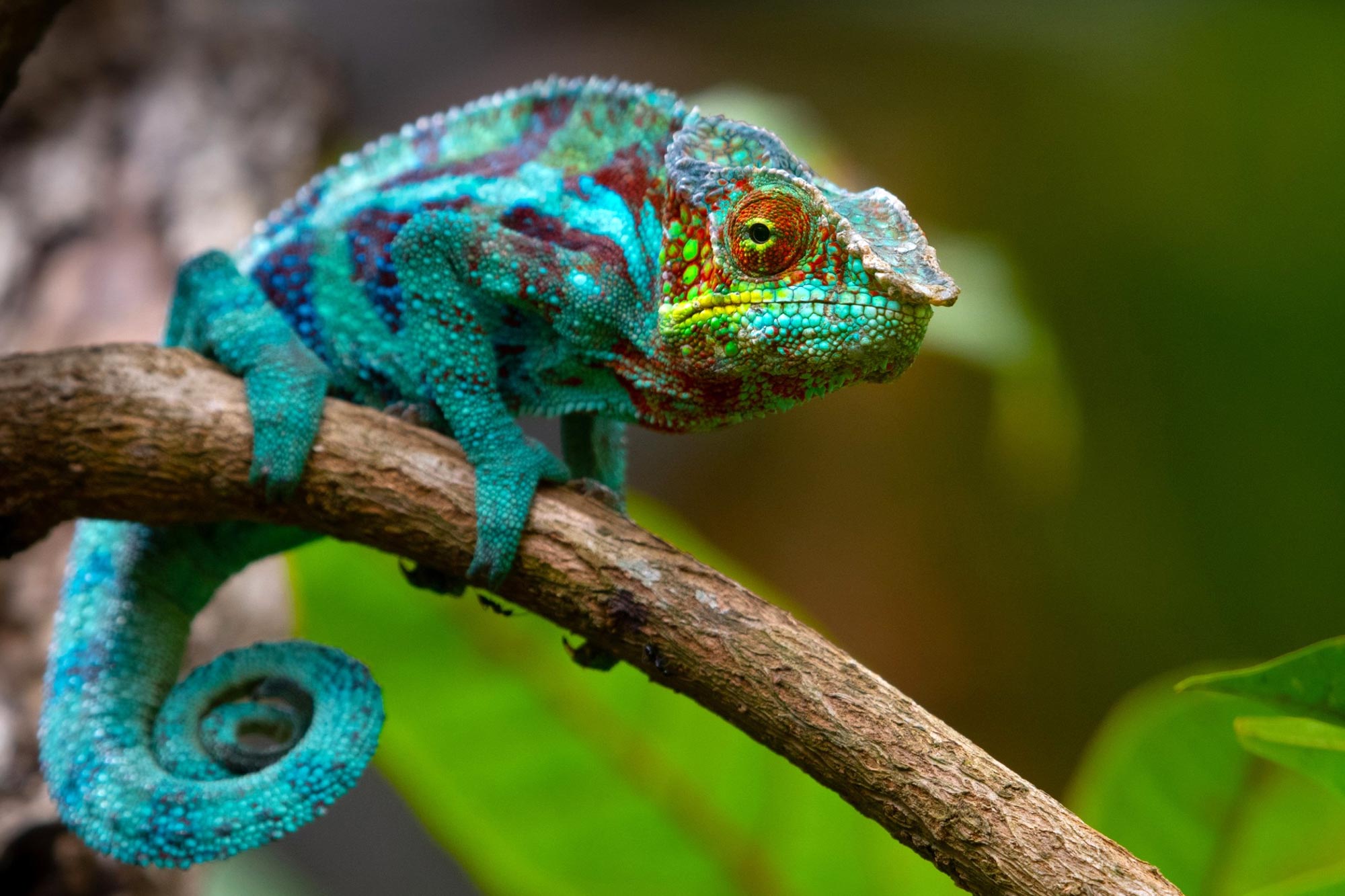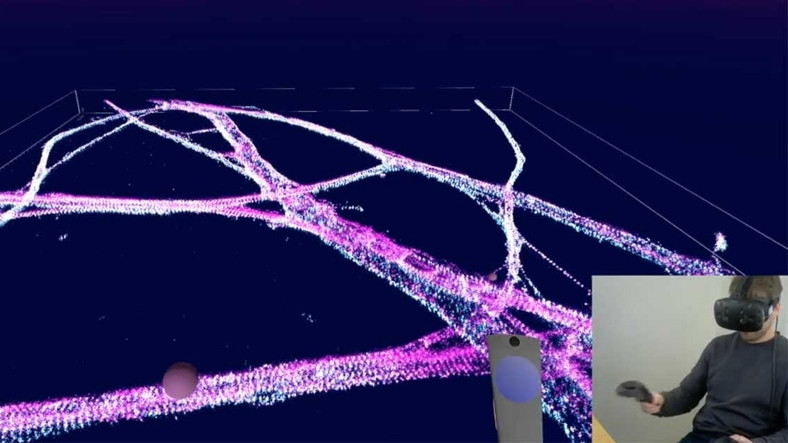Chameleons are known to be able to change their colors to camouflage, communicate, and regulate their temperature. Scientists have tried to replicate these color-changing properties for stealth technologies, anti-counterfeiting measures, and electronic displays, but the materials have limitations.
Now researchers have developed a flexible film that changes color in response to stretching, pressure, or moisture. They report their results in ACS Applied Materials & Interfaces.
Check out a video of the chameleon-inspired material here:
By tensing or relaxing the skin, chameleons can change the way light is reflected from guanine crystals beneath the surface, creating what is known as a structural coloration. These structural colors are different from the pigments that give many other creatures their hues.
Scientists have mimicked the crystalline nanostructures of chameleon’s skin in various color-changing materials, but are typically difficult to manufacture or rely on non-renewable petroleum resources. In contrast, cellulose nanocrystals are a renewable material that can self-assemble to form a film with iridescent structural colors. However, the films are typically fragile and, unlike chameleon skin, cannot be stretched without breaking. Fei Song, Yu-Zhong Wang and colleagues wanted to develop a highly flexible film made from cellulose nanocrystals that changes color when stretched.
To increase the flexibility of cellulose nanocrystals, the researchers added a polymer called PEGDA and cross-linked it to the rod-shaped nanocrystals using UV light. Depending on the amount of PEGDA, films were made with bright shimmering colors ranging from blue to red. The films were both strong and flexible, stretching up to 39% of their original length before breaking. As it was stretched, the color of a film would gradually change from red to green and then back again when relaxed.
According to the researchers, this is the first time that reversible structural color changes caused by stretching and relaxation that are brilliant and visible to the naked eye have been realized for cellulosic nanocrystalline materials. The film also changed color with pressure and moisture, allowing the team to fade in or fade out the font created with a pen without a pen. The new bio-based intelligent skin could find uses in the areas of strain detection, encryption and counterfeit protection, say the researchers.
Reference: “Chameleon-inspired variable coloring by a highly flexible photonic cellulose film” by Ze-Lian Zhang, Xiu Dong, Yi-Ning-Fan, Lu-Ming Yang, Lu He, Fei Song, Xiu-Li Wang and Yu-Zhong Wang, 23 September 2020, ACS Applied Materials & Interfaces.
DOI: 10.1021 / acsami.0c13551
The authors confirm funding from the National Natural Science Foundation of China, the Sichuan Province Science and Technology Fund for Eminent Young Scientists, the State Key Laboratory for Polymer Materials Engineering, and the Central University Basic Research Fund.



